8 Myths About Physical Therapy
Physical Therapy (PT) is a medical profession that focuses on helping patients regain their strength and mobility after injury or illness. There are several misconceptions about physical therapy.
Some people believe that physical therapy is only for athletes who suffer from overuse injuries. Others assume that physical therapy is only useful for children. Still, others think that physical therapy is only effective for treating acute injuries. In reality, physical therapy is a highly specialized field that has proven benefits for a wide variety of patients.
Here are 8 common myths about physical therapy debunked.
1. Myth: I need a referral to see a physical therapist.
Fact: In most states, there are no laws requiring a referral for a physical therapy examination.
Some states have set limits on how long a physical therapist can treat patients without a physician’s referral. Also, some insurance plans require referrals before they will cover physical therapy treatments.
2. Myth: Physical therapy is painful.
Physical therapists are trained professionals who specialize in helping people recover from injuries or illnesses. Their goal is to reduce pain and improve mobility. While some people believe that physical therapy is painful, most find it to be quite comfortable and relaxing.
3. Myth: Physical therapy is only for injuries and accidents.
Physical therapy is used to treat a wide range of musculoskeletal disorders including arthritis, sports injuries, neck pain, back pain, tendonitis, frozen shoulders, osteoporosis, fibromyalgia, and more. These are just some of the reasons why physical therapy has become such a popular treatment option.
Physical therapy is useful for treating a host of conditions, including:
• Arthritis
• Back Pain
• Carpal Tunnel Syndrome
• Frozen Shoulder
• Neck Pain
• Sports Injuries
• Tendonitis/Tendinopathy
• Wrist & Hand Conditions
4. Myth: Any health care provider can perform physical therapy.
Although 42% of consumers know physical therapy can only be performed by a licensed physical therapist (LPT), 37% still believe other healthcare providers can also perform physical therapies. In fact, many LPTs are now practicing under different professional designations such as PT, PTA, OTD, etc., because they want to offer additional services beyond traditional physical therapy.
Physical therapy encompasses a broad range of treatments including manual manipulation, exercise prescription, electrotherapy, heat/cold modalities, education, ergonomic assessment, and patient positioning. However, it is important to note that there are some areas where a licensed physical therapist is required to provide treatment.
A physical therapist’s scope of practice is regulated by each state’s licensing board. Some states require a specific number of hours of supervised clinical experience before being able to treat patients independently, while others allow physical therapists to work directly with clients without supervision. To become a certified physical therapist, applicants must successfully complete a rigorous educational process that includes both classroom and clinical components.
In addition to completing a formal education, physical therapists must take a licensure examination to receive a license. This test provides the foundation for the physical therapy profession and ensures that candidates meet basic standards for safe practice. Successful completion of the National Certification Examination allows physical therapists to self-regulate their practice and protect themselves against malpractice actions.
The American Physical Therapy Association (APTA) offers guidance on how to identify qualified professionals. APTA recommends that you ask about credentials, training, and experience. If a practitioner does not hold a credentialed designation, he or she may be working outside his or her scope of practice.
5. Myth: Physical therapy isn’t covered by insurance.
Physical therapy has been shown to improve health outcomes for those suffering from chronic conditions such as arthritis, diabetes, heart disease, stroke, cancer, asthma, COPD, Parkinson’s Disease, multiple sclerosis, fibromyalgia, lupus, rheumatoid arthritis, osteoporosis, and spinal cord injuries. In addition to improving quality of life, physical therapy helps prevent future problems and reduces medical costs.
The American Physical Therapy Association reports that most insurance companies do provide some level of reimbursement for physical therapy treatment, although there are often restrictions on how much you can receive. You’ll want to check out your policy to see what it covers. If you don’t have one, talk to your doctor about getting a referral to a physical therapist.
6. Myth: Surgery is my only option.
Physical therapy is a safe alternative to surgery for many conditions. In some cases, surgery isn’t necessary to treat certain injuries and diseases. Physical therapists are trained to help patients recover without invasive procedures. They use gentle techniques to restore strength, flexibility, balance, and function.
There are many instances where conservative treatment options are sufficient. For example, rotator cuff tears occur when tendons become damaged due to overuse or injury. A torn tendon can cause pain around the shoulder area and limit movement. In some cases, physical therapy can improve muscle strength and range of motion while strengthening the surrounding muscles and tissues.
7. Myth: All Physical Therapy Can Be Done at Home
While some patients are able to perform certain types of physical therapy at home, others require additional guidance and instruction from a licensed physical therapist. A physical therapist will work closely with you to develop a customized exercise program designed specifically to address your injury and help prevent future injuries. This includes developing a home exercise program that incorporates proper technique and helps strengthen weak areas.
8. Myth: All physical therapists are the same
Physical therapists all come from different backgrounds including training, continued education, and personal experiences. This leads to differing philosophies of treatment. Some PTs believe that exercise alone is enough to treat most injuries while others feel that exercise combined with manual therapy is the best way to heal. Many PTs also work part-time outside of school and practice, meaning that they may not always see patients during normal office hours.
In addition to choosing a PT based on your preferences, there are other factors to consider such as location, insurance coverage, and reimbursement rates. If you live in a rural area, you might need to travel farther to find a qualified provider.
Get Started Today
Rehab For Life provides excellent service and care, continuing to demonstrate our commitment to our patients and community. Contact us today to get started!





